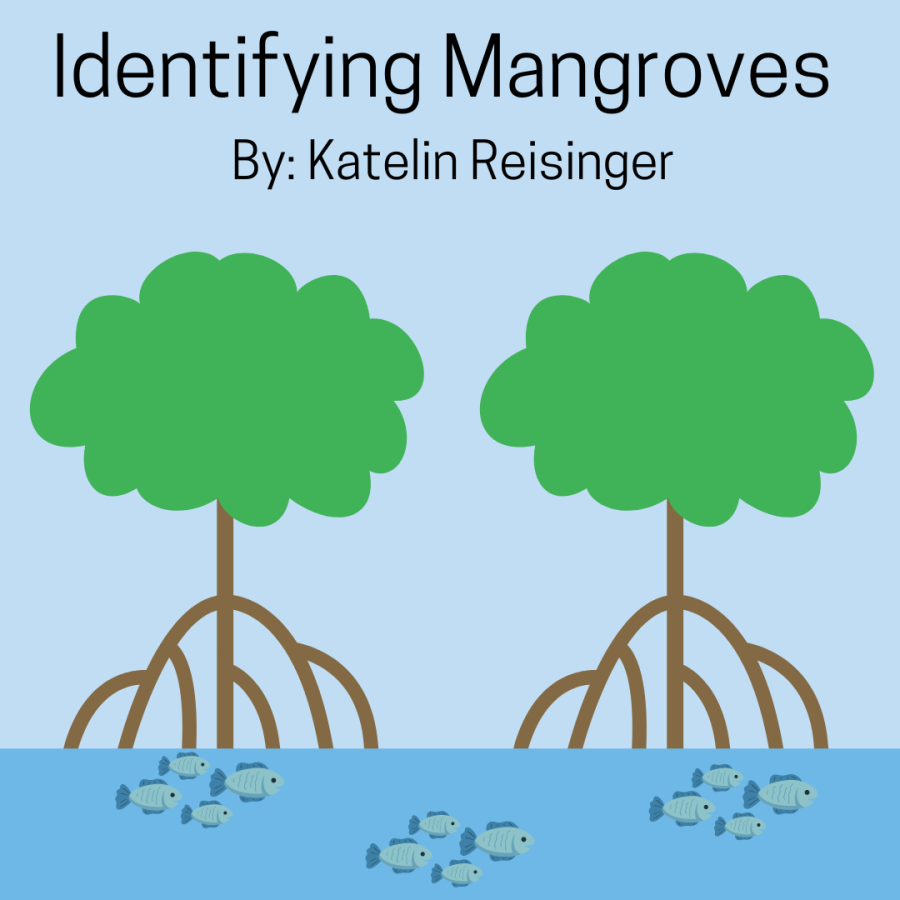Identifying Mangroves
October 13, 2022
Living on the beautiful island of Marco Island we are built on one thing, mangroves. Currently being in our hurricane season, these mangroves hold an important part in keeping our island safe. Mangroves help protect us from the harsh storms that come with coastal life, they act like a living sea wall. Many of the residents of the Island are aware of these wonderful plants but lack the knowledge to identify the specific species of them. In Florida we have three varieties of mangroves: the black mangroves, white mangroves, and red mangroves.

Red Mangroves
The red mangroves are the most common species of mangroves we’ll see on the island. The easiest way to identify the red mangroves is by their roots, they have gained the nickname the walking tree due to them. They are reddish prop roots which means they start at the high trunk of the trees and go into the water. The second easiest way to identify these trees is by their leaves; they have long thin leaves with salt and pepper spots on the back of them. These leaves turn yellow due to the salt getting expelled throughout the leaf, they fall back into the water which allows for nutrients to reenter the water. The third easiest way to identify the red mangroves is by the position of the tree, the red mangrove is the closest mangrove to the ocean.
Black Mangroves
When trying to identify the black mangrove the easiest thing to look at is the roots. Unlike the red mangrove, the black has roots that stick out of the water. This is so they can get oxygen with the moving tides. The next thing to look at is the leaves, they have long thin leaves. These leaves have a completely white bottom which has a salty taste if you lick them. These are difficult to identify with position but they are in between in the white and red mangrove.
White Mangroves
White mangroves are by far the most difficult to identify, my main method if they aren’t the other 2 it’s this one. I’ve asked a tour guide and they told me it’s like the sad mangrove cousin. The actual way to identify them is by the leaves, they have smaller dipped leaves. This mangrove is located the furthest from the ocean and also can handle the highest salinity. These mangroves’ roots are actually the last thing I look to identify them, they are similar to red mangroves but lower down and look more like regular trees.








